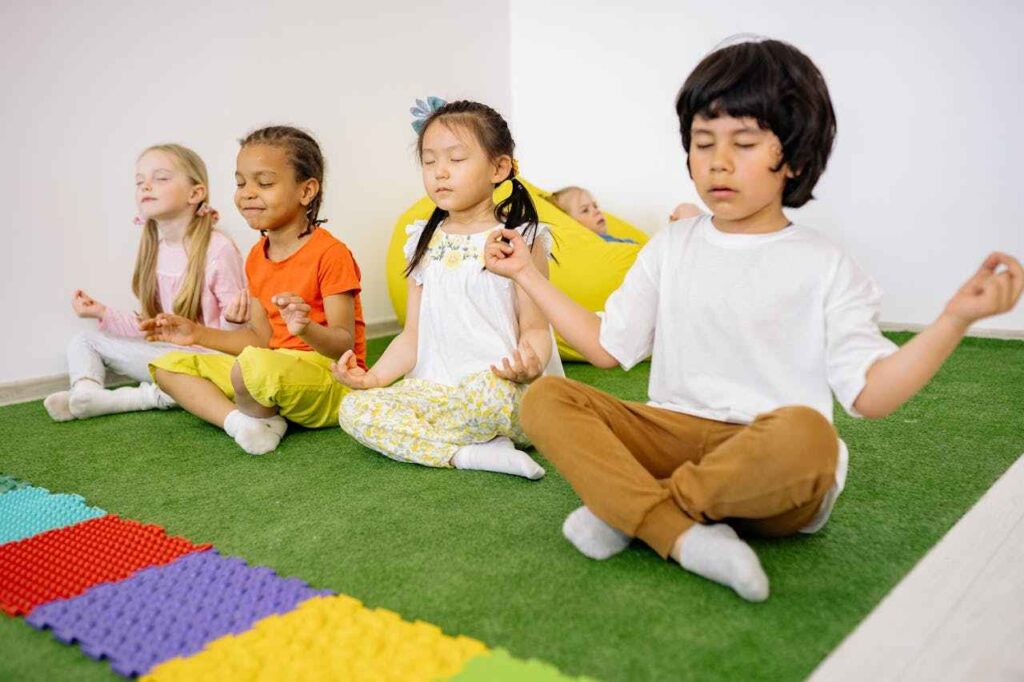Why Children’s Mental Health Deserves the Spotlight
We often rush to treat scraped knees before we think to ask about anxious hearts. But what if invisible wounds hurt just as much?
Every May, National Children’s Mental Health Awareness Week calls us to step back and look closer, not at our children’s report cards, growth charts, or social accomplishments, but at their inner lives. This week is not about awards. It’s about doing, caring, and knowing. It’s an opportunity to hear what too often remains unspoken in our children’s lives.
So, what is the mission here? It’s straightforward, but potent. Normalize discussions of children’s mental health, learn to identify the earliest signs of distress, and empower caregivers. Parents, teachers, relatives, and anyone who holds space in a child’s life should step in with empathy, not judgment.
Insight Choices knows that looking after young people’s well-being isn’t a one-size solution. Our treatment is professional, personable, and deeply child-focused because every young person deserves to feel heard and understood during Child Mental Health Awareness Week and every day of the year.
Understanding Children’s Mental Health: What Does It Really Mean?
Children’s mental health isn’t about always being cheerful or well-behaved. It’s the foundation of how kids experience the world, manage stress, befriend others, cope with problems, and see themselves.
Children have phases, that’s no secret. However, when distress becomes persistent and disrupts their daily life, it’s time to look closer.
Mental health issues in children are not imaginary. They’re not “bad behavior,” “attention-seeking,” or something they’ll “grow out of.” And most importantly? They’re treatable.
Let’s break down some of the most typical difficulties:
- Anxiety and worries: Persistent, overwhelming worry that affects sleep, school, or relationships..
- ADHD: It’s more than simply being “hyper.” Children with ADHD might have:
- Difficulty concentrating and paying attention
- Controlling impulses.
- Behavior regulation
- Depression: Yes, children do become depressed. It may not always be tears. Sometimes:
- It is irritability
- Lack of motivation
- Withdrawal from previously enjoyed activities.
- Difficulty with emotional regulation: Meltdowns that never end, overreactions that don’t make sense. These can be signs of underlying problems with managing emotions.
- Trauma or stress-related behavioral problems: Sometimes a child’s behavior is the biggest scream for help they have learned.
Let’s repeat it for all the folks at the back of the room: Mental health in kids isn’t a demonstration of weakness. They’re pleas for help and we’ve got the instruments to respond.
Spotting the Signs: When to Pay Attention
How do you recognize when a child is having a tough time? The clues aren’t always visible. Particularly when disguised as tantrums, silence, or “attitude.”
Look out for these hints:
- Persistent unhappiness, irritability, or mood swings
- Withdrawal from family and friends, or loss of interest in activities
- Difficulty concentrating or a noticeable decline in school performance
- Sleep problems or unexplained complaints about their body (such as stomachaches or headaches)
- Unusual fears, worries, or intense tantrums that are inappropriate for their age
Young children tend not to verbalize their emotions. They act them out instead. A child may not express, “I’m worried,” but may refuse school attendance, complain of stomach discomfort, or cast an unexplained tantrum.
So pay attention if your instinct tells you something’s wrong. You know your child. And Insight Choices is here to interpret those unspoken messages.
Starting the Conversation: How to Talk to Kids About Mental Health
Discussing feelings with children doesn’t have to be challenging. It can be empowering and even fun, and it can build a pathway to greater trust and understanding.
How do you start?
Keep it simple. “Your brain has feelings, too.” It may seem elementary, but it’s a doorway opener. Utilize resources such as emotion charts, storybooks, or drawing to get little ones to label their feelings. These resources translate faint unease into something they can identify, comprehend, and investigate.
Ask open-ended questions such as:
- “What was most difficult for you today?”
- “Something made me smile today. What was it?”
- “If feelings were a color, what color would they be?”
Listen, don’t interrupt. Fight the urge to repair. Just show up. Being next to a child when he struggles with his words sometimes conveys. “It’s safe to feel here.”
You don’t need to know it all. You simply need to be present. When children feel acknowledged, their world becomes less frightening and more manageable.
The Power of Early Support: What Helps and Why
Why does early children’s mental health support matter so much?
Early intervention can change a child’s entire trajectory. When mental health concerns are addressed early, we don’t just reduce immediate suffering. We help kids develop tools they’ll carry forever: coping skills, emotional awareness, confidence, and resilience.
Insight Choices meets children where they are.
Our offerings include:
- Play therapy: Play is a child’s natural language. Through toys and storytelling, children safely express their fears, desires, and conflicts.
- Parent-child therapy: Builds stronger connections and helps caregivers support emotional growth.
- Cognitive Behavioral Therapy (CBT) is tailored for children. It teaches kids to reframe negative thoughts and develop healthy patterns.
- Family counseling: Because the whole system matters. When families heal together, kids thrive.
And here’s something worth repeating. Therapy isn’t about labels. It’s about understanding. It’s about helping a child make sense of their world and know they are not alone.
Creating a Supportive Environment at Home and School
Kids aren’t in a bubble. Mental Health doesn’t stop at the therapist’s door. It continues in the environments where children live and learn. That’s why building emotionally safe spaces isn’t a choice. It’s imperative.
For Parents and Caregivers
- Begin by grounding your home in reliability. Consistent routines, set mealtimes, bedtime routines, and evening returns from school convey a quiet message: “You’re safe here. Life is steady. You don’t have to worry about what’s next.” Routines are a gentle place to land in a world that occasionally appears unpredictable.
- Create room for emotional release. That could be setting out paints and allowing your child to make art without guidance. It could be letting them stomp feet in frustration or cry without being asked to cease. Journaling, dancing, and baking. All can be healing if we approach them as such.
- Most importantly, be the emotional role model. If you get it wrong, take responsibility. If you feel overwhelmed, label it. Commenting, “I’m anxious today, so I’m doing some deep breathing,” models emotional regulation better than any speech ever will.
For Educators and School Staff:
- In the classroom, make more than lesson plans. Foster belonging. A student who feels safe emotionally will learn, socialize, and adapt.
- Notice changes in behavior. Provide gentle check-ins. Work with families and normalize mental health referrals like we would for vision or hearing issues. Support must never be punitive — it must be possible.
- Because mental health is never a solitary endeavor, it’s a collective responsibility.
Insight Choices: Supporting Your Child’s Mental Health Journey
Insight Choices doesn’t just work with children. We walk with them through anxiety, through change, through challenge, and into clarity.
Our therapists specialize in working with children and families. Sessions are tailored to developmental stages, emotional readiness, and personal experiences. No two kids are alike, and their care shouldn’t be either.
We take cultural sensitivity seriously because mental health doesn’t exist in a vacuum. It lives in family stories, generational patterns, and personal identity. Whether your family is navigating language barriers, grief, migration, or neurodivergence, we’re here to offer children’s mental health support that fits you.
Above all, reaching out isn’t a weakness. It’s courage, love, and choosing hope over silence.
Conclusion: Planting Seeds of Hope
Let’s shift the narrative.
Mental health care is not only a response to the crisis. It’s a gift we give to our children—one that helps build lifelong self-knowledge, self-assurance, and emotional resilience.
Because just as we take care of their bodies with nutritious food and doctor appointments, we need to take care of their minds with empathy, connection, and kindness.
You don’t need to have it all together. You need to start during Children’s Mental Health Awareness Week. Insight Choices is here to take this journey with you, step by step. With compassion, with experience, and with unrelenting optimism.
Because every child is worthy of a chance to flourish. Not only physically, but emotionally too. And when we cultivate their minds, we enable them to blossom.
FAQs
- How can I tell if my child is going through a phase or needs professional help?
Look for persistent changes in mood, behavior, sleep, appetite, or social withdrawal lasting weeks. If it interferes with daily life, consult a professional.
- What happens in a child therapy session?
Sessions may include talk therapy, play-based activities, or creative expression. Therapists build trust and help children process emotions and develop coping skills.
- Will therapy involve the whole family?
Often, yes. Family involvement can improve outcomes. Therapists may include parents or caregivers in sessions or provide guidance separately.
- Is it okay to try therapy even if my child doesn’t have a diagnosis?
Absolutely. Therapy can support emotional growth, manage stress, and improve communication—no formal diagnosis needed.
- How do I talk to my child about starting therapy without scaring them?
Use age-appropriate language. Frame therapy as a safe space to talk and feel better. Emphasize that it’s a normal and helpful experience.

Dr. Chang is a highly respected psychiatrist with extensive experience serving patients in the greater Los Angeles area. With a distinguished background in psychiatry, he has dedicated his career to advancing mental health care through both clinical practice and academic contributions.

